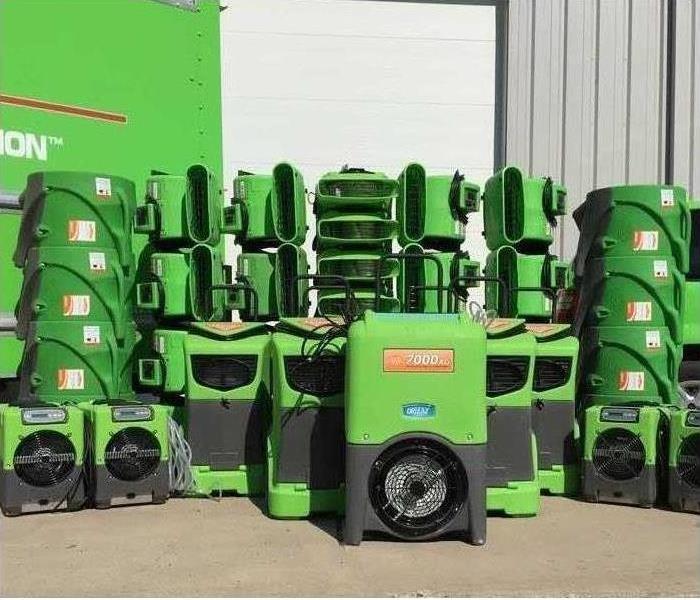Our SERVPRO Water Damage Mitigation Equipment
10/15/2019 (Permalink)
Our SERVPRO Water Damage Mitigation Equipment
Extraction Equipment
The most effective method of removing moisture from a structure is extraction. This is why it is critical to respond quickly to a water damage and to provide emergency mitigation services. When the water is extracted quickly, the environment can usually be dried much faster.
Extractors are used in cleaning carpets and upholstery and in removing water from floors following a water damage. Extractors can either be truck-mounted or portable, allowing for greater access inside structures.
Air Moving Equipment
Air movers are used in water damage restoration to enhance evaporation at the surface level, thereby reducing drying time. As airflow at the surface level increases, the moisture in the air increases. This moisture is then eliminated via the use of dehumidification equipment.
Dehumidification Equipment
By extracting water vapor from the air, dehumidifiers lower the relative humidity, which in turn increases the rate of evaporation. In a water damaged structure, dehumidifiers pull in the moist, humid air and then discharge dry, warm air. The dry air acts like a sponge, absorbing moisture from wet materials. SERVPRO of Loudoun County Professionals use two types of dehumidifiers:
Refrigerant Dehumidifiers work similarly to air conditioners.
Desiccant Dehumidifiers use chemicals, called desiccants, that readily absorb moisture from the air.
Deodorization Equipment
Ultra Low Volume (ULV) Foggers will atomize liquid deodorizing agents, producing a fine mist that easily penetrates sites where odor-causing residues accumulate. The device can also be used to inject fungicides and disinfectants into wall cavities and other difficult-to-access areas.
Thermal Foggers dispense solvent-based products in large volume, dense fogs suitable for confined areas. The fog consists of tiny particles of deodorant solution that pair with and neutralize odor-causing particles.

 24/7 Emergency Service
24/7 Emergency Service
